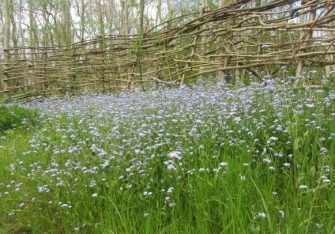
Spring
The rotational coppicing and removal of encroaching standard trees has really opened up the woodland floor, allowing a large array of wild flowers, insects and birds to move in.
It’s been a late spring this year but the sudden May warmth has created an explosion of life.
Forget-me-nots create clouds of frothy colour with the fading yellow primroses disappearing in the foliage of dogs mercury.
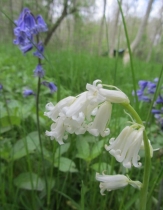
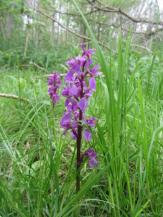
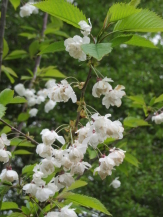
It’s fascinating to see the bluebells following you to the cleared areas year on year and finding a white one was a surprise. (left)
The bugle (right) looks like an invading army in large stands with individual flower spikes spreading outwards from the bigger plant.
We have orchids this year too which is fantastic (below left)
The hawthorn blossom (right) is very strongly scented this year in the still of the woods and encouraging the insects and bees.
We have seen several large bumble bees entering the ground under the rotten boll of a tree so assume they have a nest there.
Although the blackthorn blossom is long gone, the cherry trees have been very productive, so we’ll have to try and beat the birds for the fruit if it sets (below left)
The bird song is one of the most obvious things this time of year.
When we first started working the wood in Jan 2013 the one thing we noticed was the absence of bird life.
The management programme is vital for the success of many birds and we now have wrens, bullfinch, robins, tits and a woodpecker (woodpecker hole right)
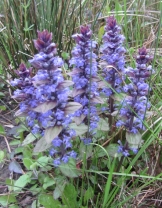
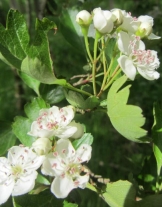
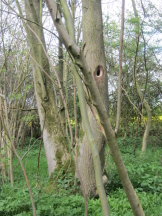
The cries of both pheasants and birds of prey are ever present and while the nest boxes we placed in the trees have not been used, the one left in the wood store at ground level has had a pair of blue tits moved in. The untidy heap of moss that is a wrens nest is also in the most inconvenient place; in the apex of another of our wood storage areas.
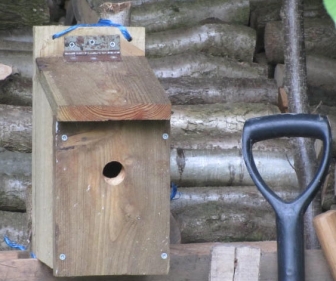
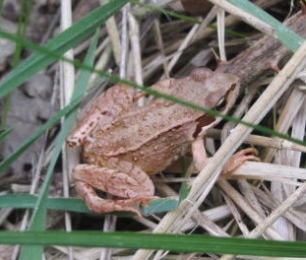
The ubiquitous mice and shrews are everywhere and it’s always nice to see the frogs and toads.
It's clear a well managed woodland can improve the lot of both nature and a woodsman.
